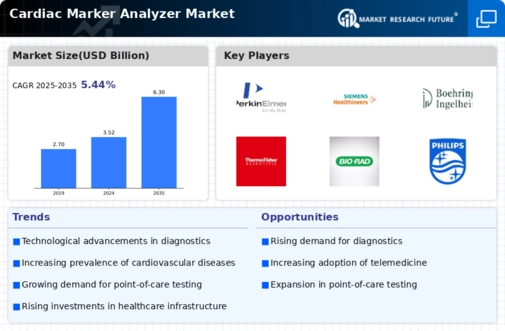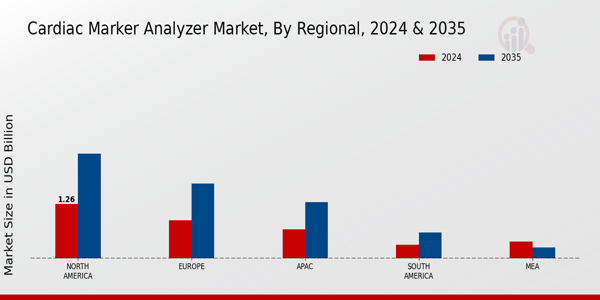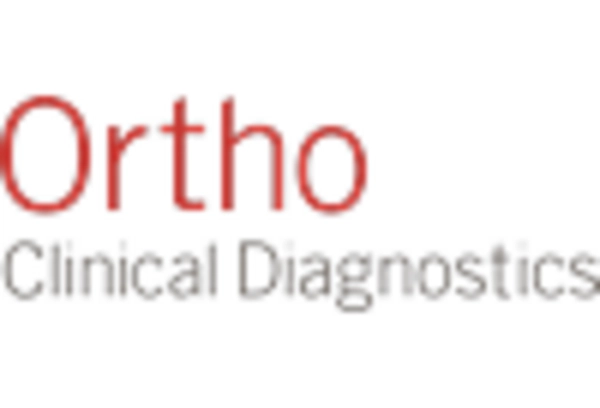Cardiac Marker Analyzer Market Summary
As per MRFR analysis, the Cardiac Marker Analyzer Market Size was estimated at 3.52 USD Billion in 2024. The Cardiac Marker Analyzer industry is projected to grow from 3.711 USD Billion in 2025 to 6.304 USD Billion by 2035, exhibiting a compound annual growth rate (CAGR) of 5.44 during the forecast period 2025 - 2035.
Key Market Trends & Highlights
The Cardiac Marker Analyzer Market is poised for substantial growth driven by technological advancements and increasing health awareness.
- North America remains the largest market for cardiac marker analyzers, driven by advanced healthcare infrastructure and high prevalence of cardiovascular diseases.
- The Asia-Pacific region is emerging as the fastest-growing market, fueled by rising health awareness and increasing investments in healthcare technology.
- The chemiluminescence segment dominates the market, while the electrochemical segment is experiencing rapid growth due to its innovative capabilities.
- Key market drivers include the rising incidence of cardiovascular diseases and the growing demand for point-of-care testing, which enhances diagnostic efficiency.
Market Size & Forecast
| 2024 Market Size | 3.52 (USD Billion) |
| 2035 Market Size | 6.304 (USD Billion) |
| CAGR (2025 - 2035) | 5.44% |
Major Players
Roche Diagnostics (CH), Abbott Laboratories (US), Siemens Healthineers (DE), Beckman Coulter (US), Ortho Clinical Diagnostics (US), Thermo Fisher Scientific (US), Bio-Rad Laboratories (US), PerkinElmer (US)


















Leave a Comment